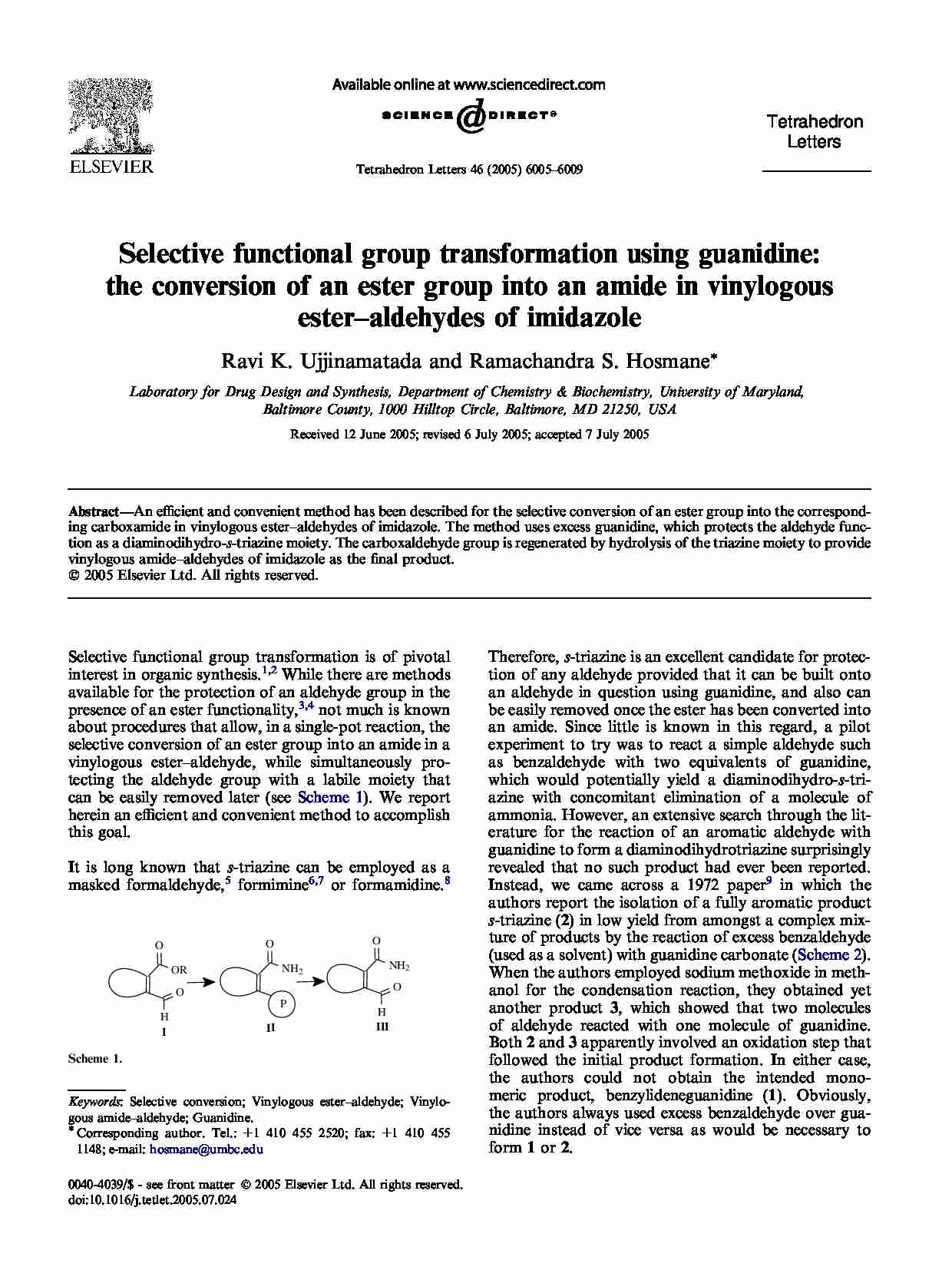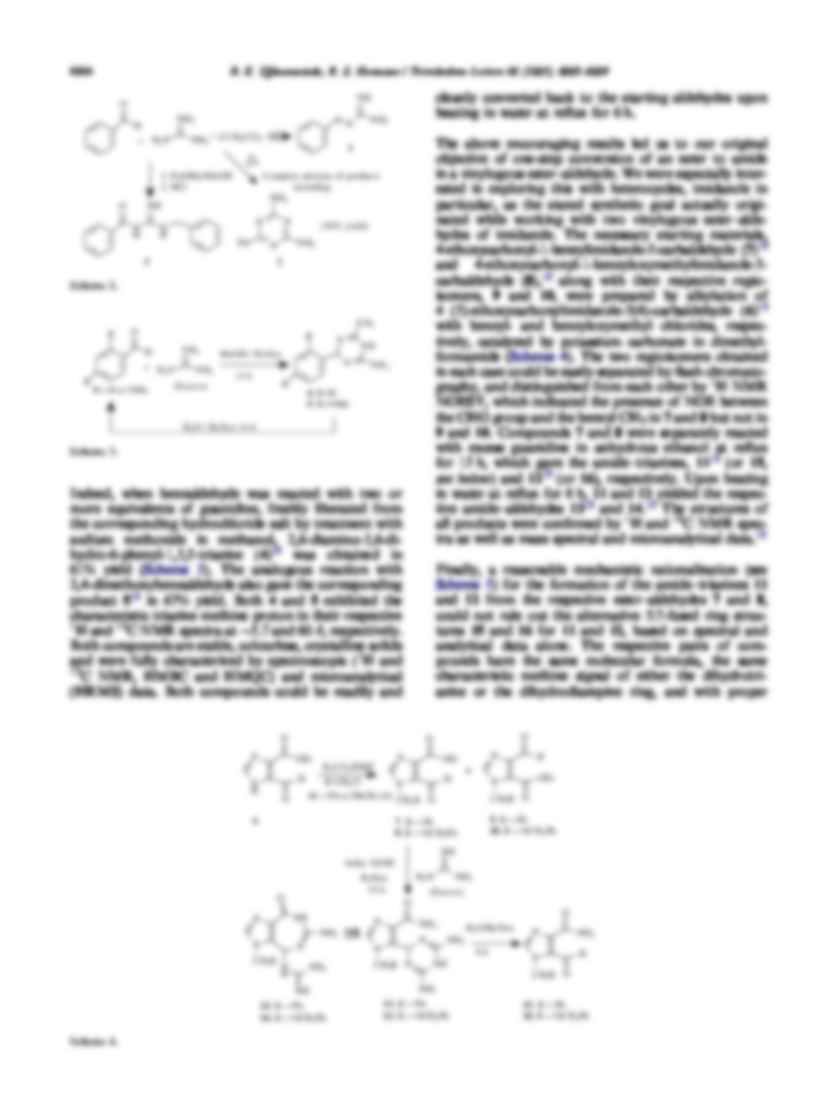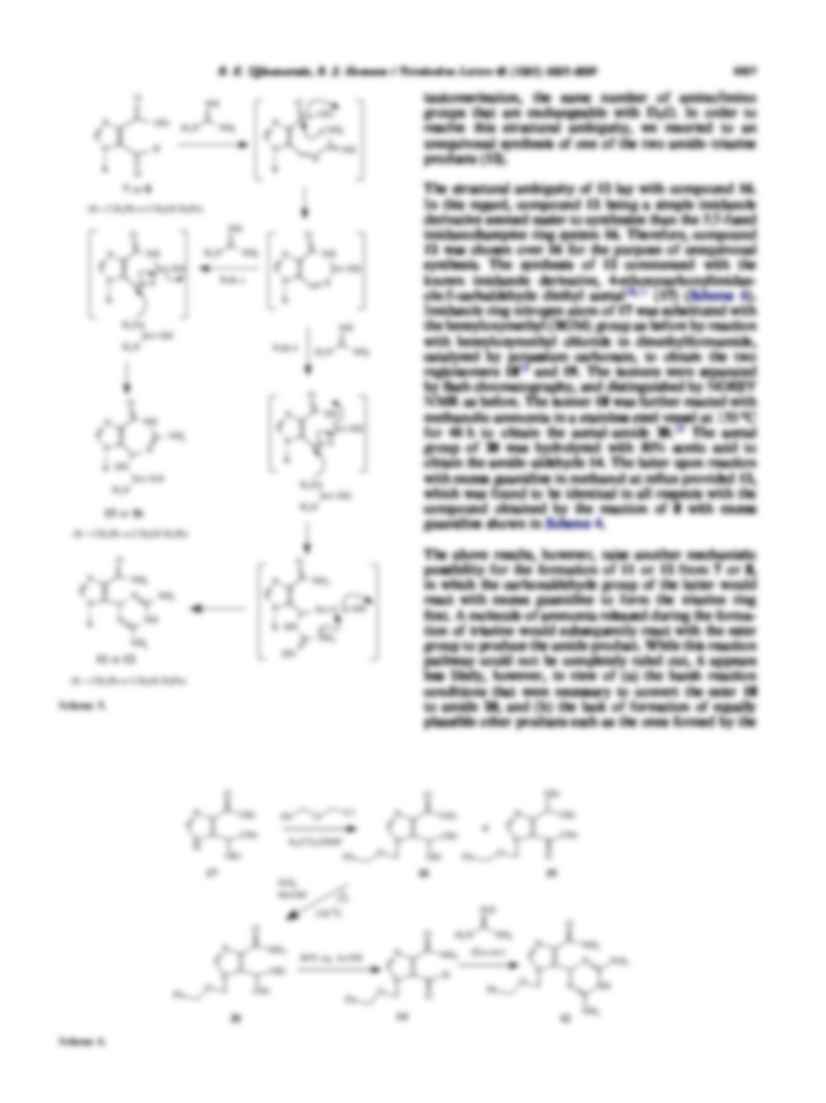To tylko jedna z 5 stron tej notatki. Zaloguj się aby zobaczyć ten dokument.
Zobacz
całą notatkę



Tetrahedron
Letters
Tetrahedron Letters 46 (2005) 6005–6009
Selective functional group transformation using guanidine:
the conversion of an ester group into an amide in vinylogous
ester–aldehydes of imidazole
Ravi K. Ujjinamatada and Ramachandra S. Hosmane*
Laboratory for Drug Design and Synthesis, Department of Chemistry & Biochemistry, University of Maryland,
Baltimore County, 1000 Hilltop Circle, Baltimore, MD 21250, USA
Received 12 June 2005; revised 6 July 2005; accepted 7 July 2005
Abstract—An efficient and convenient method has been described for the selective conversion of an ester group into the corresponding carboxamide in vinylogous ester–aldehydes of imidazole. The method uses excess guanidine, which protects the aldehyde function as a diaminodihydro-s-triazine moiety. The carboxaldehyde group is regenerated by hydrolysis of the triazine moiety to provide
vinylogous amide–aldehydes of imidazole as the final product.
Ó 2005 Elsevier Ltd. All rights reserved.
Selective functional group transformation is of pivotal
interest in organic synthesis.1,2 While there are methods
available for the protection of an aldehyde group in the
presence of an ester functionality,3,4 not much is known
about procedures that allow, in a single-pot reaction, the
selective conversion of an ester group into an amide in a
vinylogous ester–aldehyde, while simultaneously protecting the aldehyde group with a labile moiety that
can be easily removed later (see Scheme 1). We report
herein an efficient and convenient method to accomplish
this goal.
It is long known that s-triazine can be employed as a
masked formaldehyde,5 formimine6,7 or formamidine.8
O
O
O
NH2
OR
NH2
O
O
P
H
I
II
H
III
Scheme 1.
Keywords: Selective conversion; Vinylogous ester–aldehyde; Vinylogous amide–aldehyde; Guanidine.
* Corresponding author. Tel.: +1 410 455 2520; fax: +1 410 455
1148; e-mail: hosmane@umbc.edu
0040-4039/$ - see front matter Ó 2005 Elsevier Ltd. All rights reserved.
doi:10.1016/j.tetlet.2005.07.024
Therefore, s-triazine is an excellent candidate for protection of any aldehyde provided that it can be built onto
an aldehyde in question using guanidine, and also can
be easily removed once the ester has been converted into
an amide. Since little is known in this regard, a pilot
experiment to try was to react a simple aldehyde such
as benzaldehyde with two equivalents of guanidine,
which would potentially yield a diaminodihydro-s-triazine with concomitant elimination of a molecule of
ammonia. However, an extensive search through the literature for the reaction of an aromatic aldehyde with
guanidine to form a diaminodihydrotriazine surprisingly
revealed that no such product had ever been reported.
Instead, we came across a 1972 paper9 in which the
authors report the isolation of a fully aromatic product
s-triazine (2) in low yield from amongst a complex mixture of products by the reaction of excess benzaldehyde
(used as a solvent) with guanidine carbonate (Scheme 2).
When
... zobacz całą notatkę






Komentarze użytkowników (0)